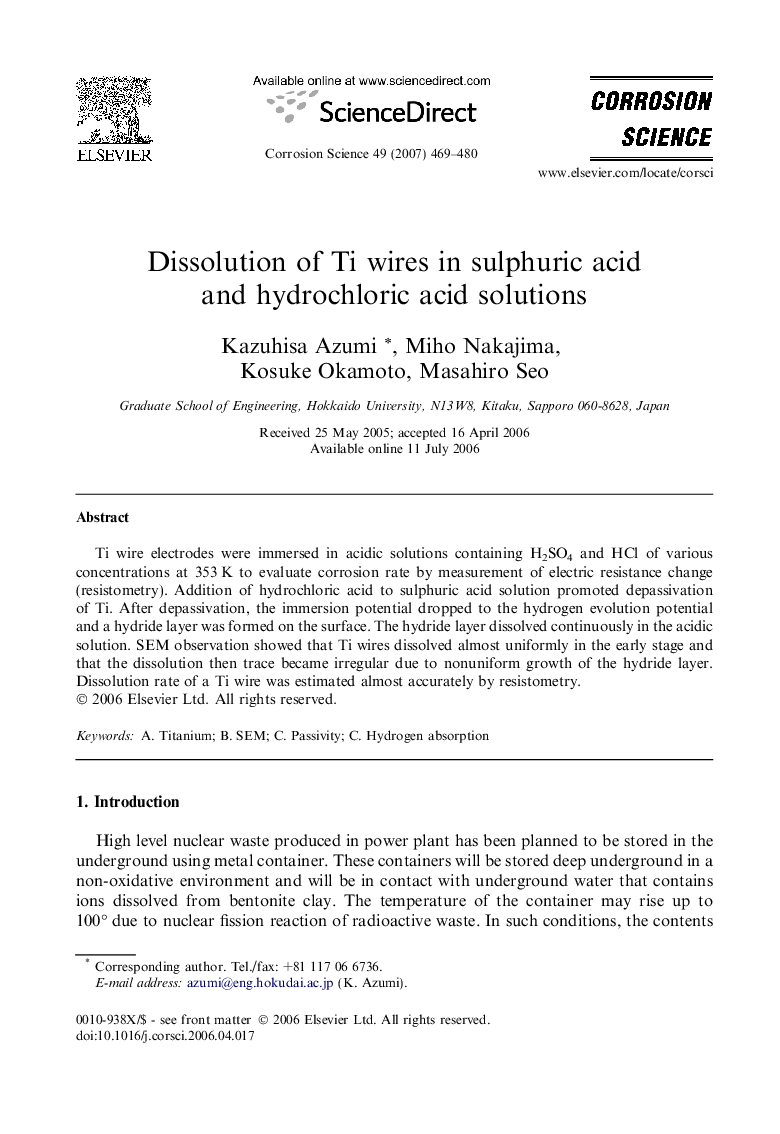| Article ID | Journal | Published Year | Pages | File Type |
|---|---|---|---|---|
| 1471992 | Corrosion Science | 2007 | 12 Pages |
Ti wire electrodes were immersed in acidic solutions containing H2SO4 and HCl of various concentrations at 353 K to evaluate corrosion rate by measurement of electric resistance change (resistometry). Addition of hydrochloric acid to sulphuric acid solution promoted depassivation of Ti. After depassivation, the immersion potential dropped to the hydrogen evolution potential and a hydride layer was formed on the surface. The hydride layer dissolved continuously in the acidic solution. SEM observation showed that Ti wires dissolved almost uniformly in the early stage and that the dissolution then trace became irregular due to nonuniform growth of the hydride layer. Dissolution rate of a Ti wire was estimated almost accurately by resistometry.
